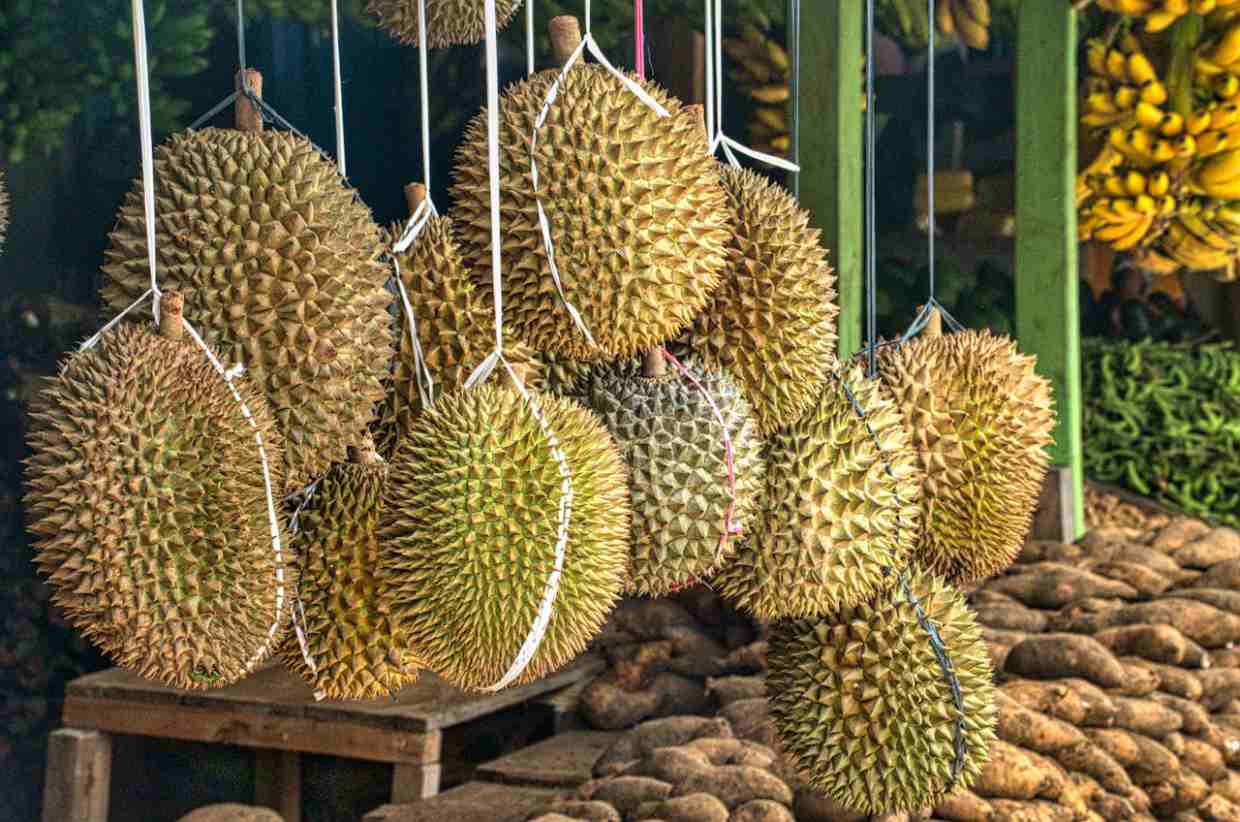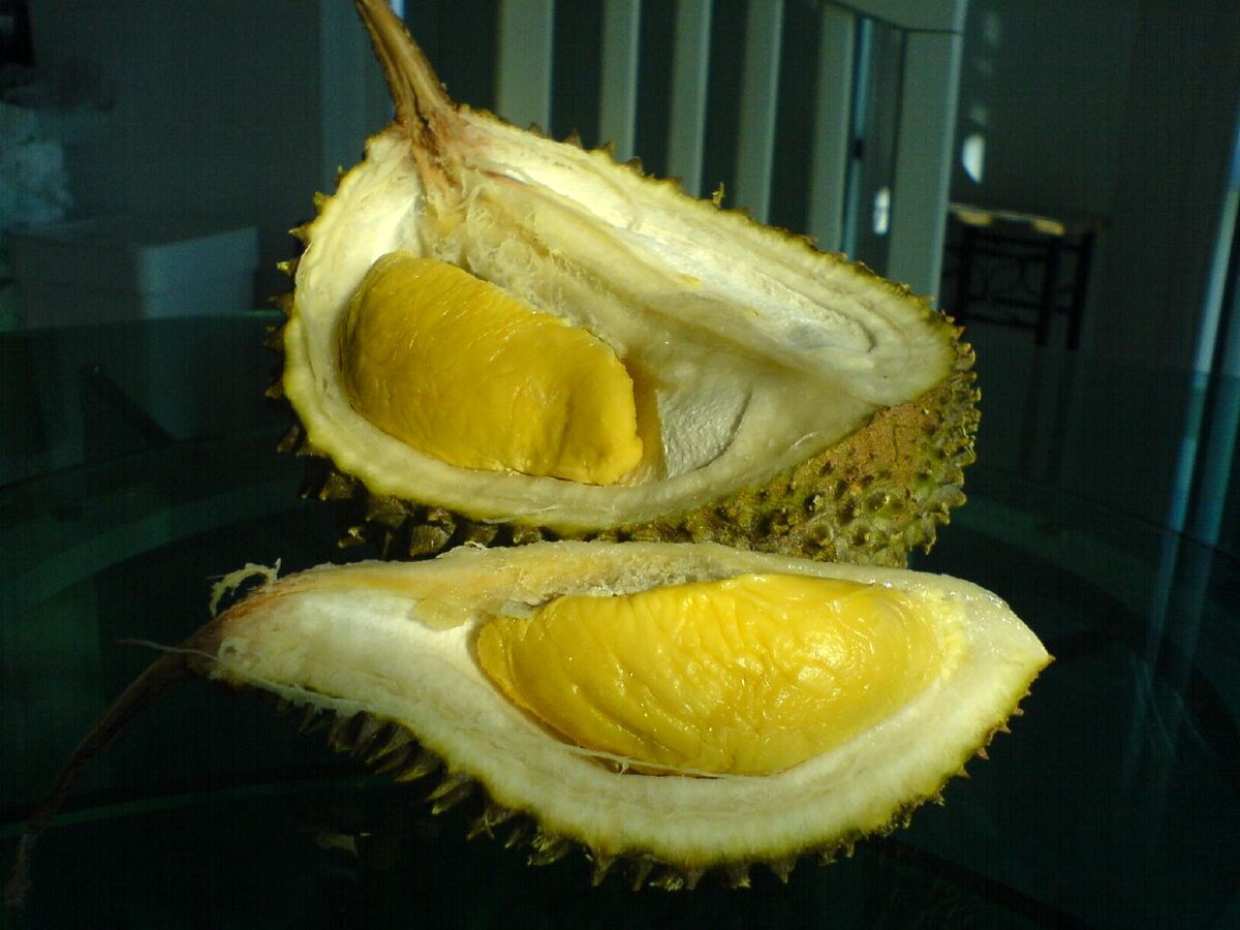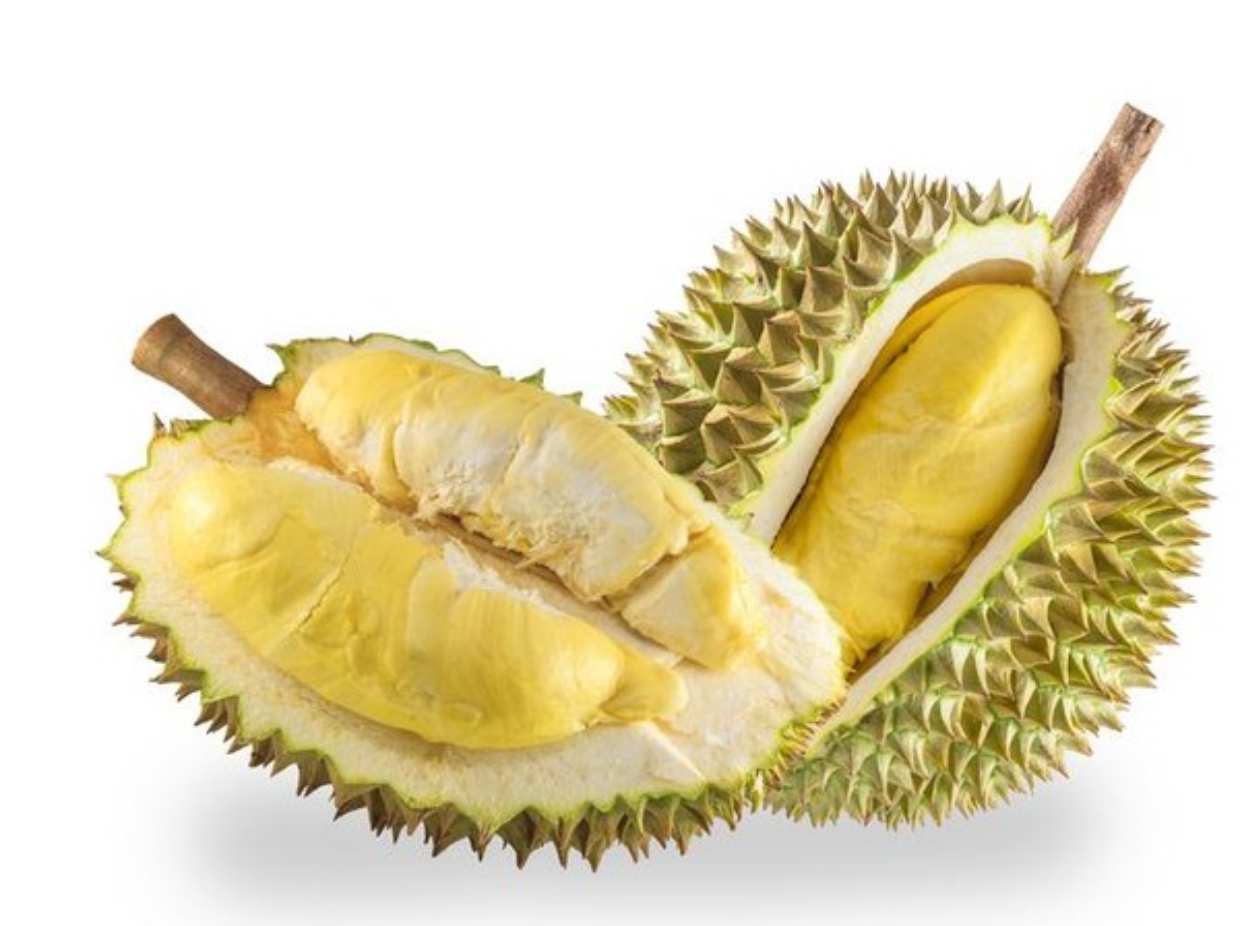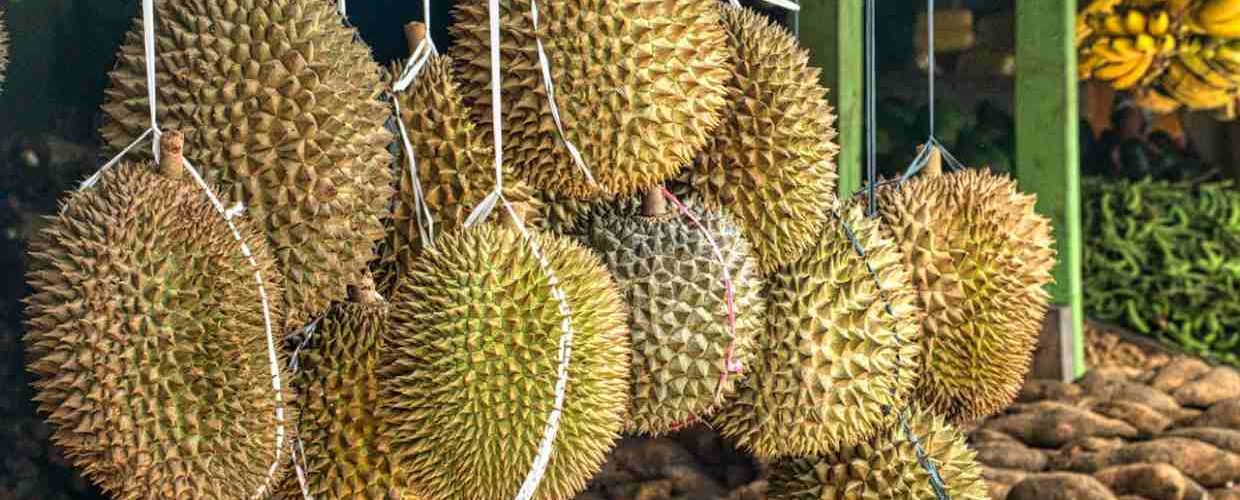The durian, often dubbed the “king of fruits,” holds a special place in the hearts of many across Southeast Asia. Among the numerous varieties with distinct flavors and qualities, the Musang King, Thailand’s Monthong, and Durian Bawor stand out as some of the most beloved. This article explores the unique attributes of these three famed durians, each offering a tantalizing experience to durian enthusiasts.

Musang King: The Malaysian Marvel
Originating from Malaysia, the Musang King durian has achieved iconic status for its exceptional taste and quality. Easily recognizable by its large, oval shape and golden yellow flesh, Musang King is celebrated for its creamy texture and fragrant aroma.
Musang King durians are relatively small, typically weighing between 1.5 to 2.5 kilograms. Despite their size, the flesh is thick, soft, and remarkably smooth. The flavor profile is a harmonious blend of sweet and slightly bitter notes, with a buttery richness that makes it highly sought after. The seeds are flat and almost shrunken, maximizing the amount of edible flesh.

This premium quality is reflected in its price, often reaching up to RM85 per kilogram. Musang King’s physical characteristics also set it apart: its blunt and sparse spikes, coupled with a star-shaped pattern at the base of the shell, make it easy to identify.
Monthong: Thailand’s Golden Pillow
Translating to “golden pillow,” Monthong is the most popular Thai durian. These durians are generally large, weighing between 4 to 6 kilograms, with an ovular shape and a milder aroma compared to other varieties. The thorns are brownish, while the flesh is a golden yellow, thick, and sweet.
Monthong durians are celebrated for their thick, creamy, and sweet flesh, which features notes of caramel. Each flesh lobe has a semi-firm surface, revealing a buttery-soft interior with small, hard seeds. The flavor is rich, sweet, warm, and complex, described as a blend of vanilla, caramel, pepper, and sulfur notes.

Monthong durians are not only known for their delightful taste but also for their high yield. With proper care, a Monthong tree can produce 20-30 fruits within 7 years. The fruits are long and oval, curving at the end, making them distinctively recognizable. Prices for Monthong durian plants range from RM45 for small plants to RM65 for medium-sized ones.
Durian Bawor: The Pride of Banyumas
In contrast, Durian Bawor, which originates from Banyumas in Central Java, Indonesia, is known for its impressive size, with fruits weighing between 6 and 9 kilograms, and sometimes even reaching up to 12 kilograms.
The flesh of Durian Bawor is a rich yellow, characterized by its creamy texture and a unique blend of sweet and slightly bitter flavors, reminiscent of Durian Petruk. This hint of bitterness is what endears it to many durian lovers. The flesh is dense and custard-like, encasing small seeds, making it a substantial and satisfying treat.

Durian Bawor trees begin bearing fruit at the age of 3 to 4.5 years, and they can be harvested up to three times a year. This frequent yield, combined with the fruit’s delectable taste, ensures a high market price, often around Rp115,000 per kilogram (approximately RM33).
A Comparative Delight
The Musang King, Monthong, and Durian Bawor each offer a unique and delightful durian experience. Musang King’s appeal lies in its creamy, buttery texture and luxurious taste, which has earned it international acclaim. Monthong’s mild aroma, creamy sweet flesh with caramel notes, and high yield make it the pride of Thailand. Meanwhile, Durian Bawor’s large size, dense flesh, and distinctive bitter-sweet flavor profile make it a cherished delicacy in Indonesia.
Ultimately, the preference between these varieties comes down to individual taste. Some may favor the robust and slightly bitter notes of Durian Bawor, others might lean towards the rich, smooth elegance of Musang King, and many will appreciate the complex sweetness of Monthong. Regardless of choice, these durian varieties exemplify why the fruit is celebrated as the king of fruits, offering a tantalizing treat for connoisseurs and casual eaters alike across Southeast Asia.











